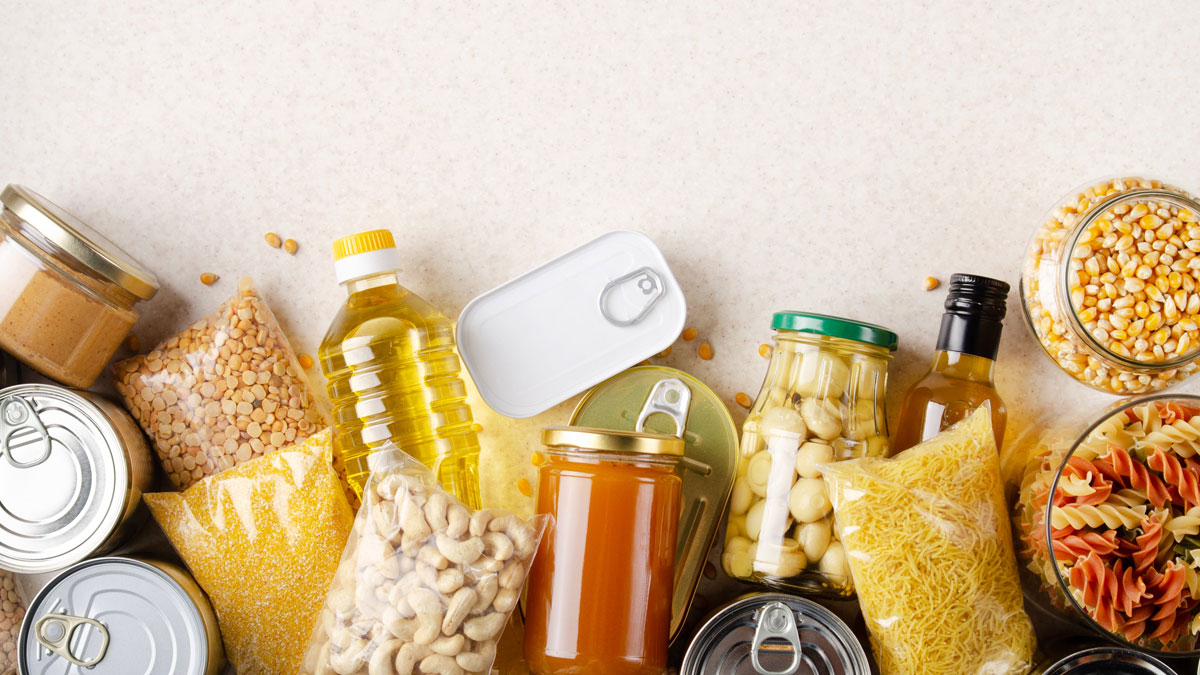The hoarding of toilet paper when the coronavirus struck the United States became a sad joke. But people were also in grocery stores stocking up on nonperishable foods as well.
Dry, canned and frozen food sales have all seen a substantial increase since the beginning of the pandemic. According to Nielsen market research, frozen fruit sales grew 24% from Jan. 1 to April 4 of this year compared to 2019. Similarly, consumers spent 19% more on frozen vegetables, 32% more on shelf stable vegetables and 10% more on fresh vegetables. In general, the most nutritional nonperishables are frozen, dry and canned versions of these foods.
“Having a little nutrition knowledge, an intentionally stocked kitchen and a few basic cooking skills mean you can make a nutritious meal regardless of the current grocery store climate,” said Betsy Eddy, a registered dietitian with Bon Secours St. Francis Health System in Greenville. “I encourage my clients to stock their freezers with frozen, nonstarchy vegetables and fruit, while maintaining a steady supply of canned tuna, canned salmon, canned beans, rolled oats, dry whole grains such as farro, quinoa and brown rice, and natural peanut butter.”
Eddy said other pantry staples she asks clients to consider are dried herbs and spices, olive oil, Dijon mustard, jarred tomato sauce and low sodium chicken stock.
“These items can transform basic foods into something delicious. Take canned tuna and canned white beans for example: Drain the tuna and beans, drizzle some olive oil and mix in some dried basil and oregano for a simple, flavorful and nutrient-dense protein.”
Regarding best value – plain, unseasoned versions of these foods will almost always be the least expensive, Eddy explained. Choosing generic brands will often cut costs as well. As a general rule, the more time a consumer has to put into preparing food, the less expensive it will be because there are reduced labor and ingredient costs.
Christine McFarland Martin, a nutrition support and outpatient dietitian with the Ralph H. Johnson Veterans Affairs Medical Center in Charleston, quipped that when the COVID-19 pandemic hit, “Most people in our community began stocking up like a hurricane was coming, because isn’t that what Charlestonians do best? Peanut butter, canned meats and vegetables, bread, water and snack food were some of the first items to disappear off shelves.”
Some of Martin’s favorite nonperishable items come from the pulse/legume family.
“Black beans, kidney beans, black-eyed peas, chickpeas, lentils, nuts and nut butters can be made into so many different dishes or served in conjunction with grains for a simple complete meal. These are a great value for a nutritional powerhouse and are easy to use and heat when canned.”
Other nutritious nonperishables include dried and canned fruits and vegetables, canned fish and poultry, grains and pasta, soups, freeze dried meals and camping meals.
“It is important to monitor sodium in a diet,” Martin added. “Most Americans eat significantly more than the suggested 2,300 mg per day. Many nonperishable items are very high in sodium as it is an inexpensive preservative. Variety is the key to a balanced diet, so it is important to represent all food groups when making purchases for a pandemic or hurricane season. For the pandemic, because I knew I would have electricity, I filled my freezer with frozen lean meats and vegetables and my pantry with dried beans, rice, peanut butter and flour. I also made sure the herbs and spices were well-stocked.”
She has no special recommendations by age or gender, unless there are individuals in a family who follow a special diet or have “a need for chocolate in stressful times.”
Eddy said, “Regardless of age, we all need complex carbohydrates, lean protein and healthy fats that are rich in vitamins and minerals, as well as fiber, probiotics and antioxidants. My top five picks that I always have stocked are: canned fish (skipjack tuna, Atlantic salmon and wild caught mackerel); dry whole grains, specifically old-fashioned rolled oats and quinoa; canned beans (black, kidney, cannellini and pinto); frozen berries (blueberries and raspberries are my favorite); and frozen vegetables (broccoli florets, riced cauliflower and diced peppers and onions).”
As for nutrient-dense nonperishables, look at food labels on canned, dried and frozen foods to find options that are lower in saturated fat, sodium and added sugar and higher in fiber.
Recipe Ideas with nonperishables, according to Betsy Eddy, registered dietitian with Bon Secours St. Francis Health System in Greenville
Salmon Patties with Riced Cauliflower and Roasted Sweet Potatoes
Preheat oven to 400 degrees Fahrenheit. Dice one to two sweet potatoes, toss with olive oil, salt and cinnamon and spread on a sheet pan. Take a bag of frozen roasted cauliflower and place on another sheet pan, tossing with olive oil, parsley, oregano, salt and pepper. Place in oven for about 20 minutes.
Meanwhile, put a half cup of oats in a blender or food processer and blend until it is a powder consistency. Transfer the oat flour to a bowl. Add a spoonful of Dijon mustard, one egg and one can of drained salmon and mix until well-combined. Form four to five patties and place in a medium hot skillet with one tablespoon of olive oil or canola oil. Cook for about three minutes on each side, then transfer to the oven for about 10 minutes.
Herb Tuna and White Bean Salad
Mix a can of drained skipjack tuna with half a can of drained white beans, dried oregano, dried basil and about one tablespoon of olive oil. Serve over fresh spinach or arugula with whole grain crackers.
Black Bean Quesadilla with Peppers and Onions
Saute frozen peppers and onions in a skillet with some olive oil, red pepper flakes, chili powder and cumin. Once soft, add one can of drained black beans. Transfer the vegetable mixture to a bowl. Fill two corn tortillas with pepper jack cheese and the vegetables and heat in skillet until cheese is melted.
Blender Pancakes (adapted from The Healthy Maven blog)
Add 1½ cups of rolled oats, two teaspoons baking powder, one teaspoon cinnamon, 1 teaspoon vanilla, one egg, one cup milk, and two ripe bananas to a blender. Blend until well-combined. Heat one teaspoon of oil or butter in a medium hot skillet. Pour batter into skillet to make pancakes. Spread peanut butter on top of pancakes, and microwave frozen berries for 30 to 60 seconds to add as an additional topping. Serve maple syrup on the side.
Broccoli Mac ‘n’ Cheese
Preheat oven to 425 degrees Fahrenheit. Spread one to two bags of frozen broccoli florets on a sheet pan with olive oil, salt, garlic powder and onion powder. Roast in oven for 20 to 30 minutes. Make a box of white cheddar mac ‘n’ cheese according to package instructions. Add roasted broccoli and a can of drained white beans to mac ‘n’ cheese.
By John Torsiello







